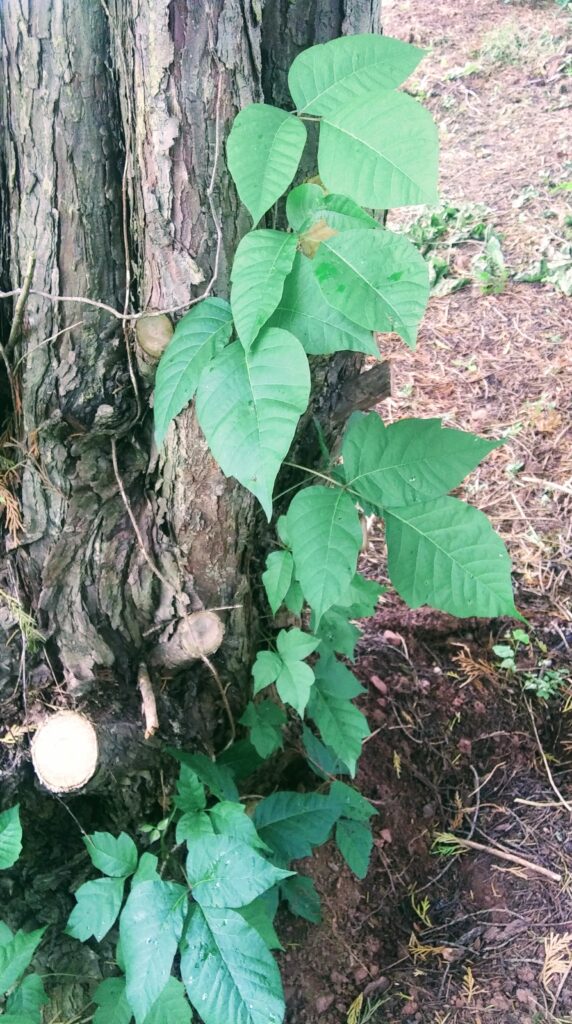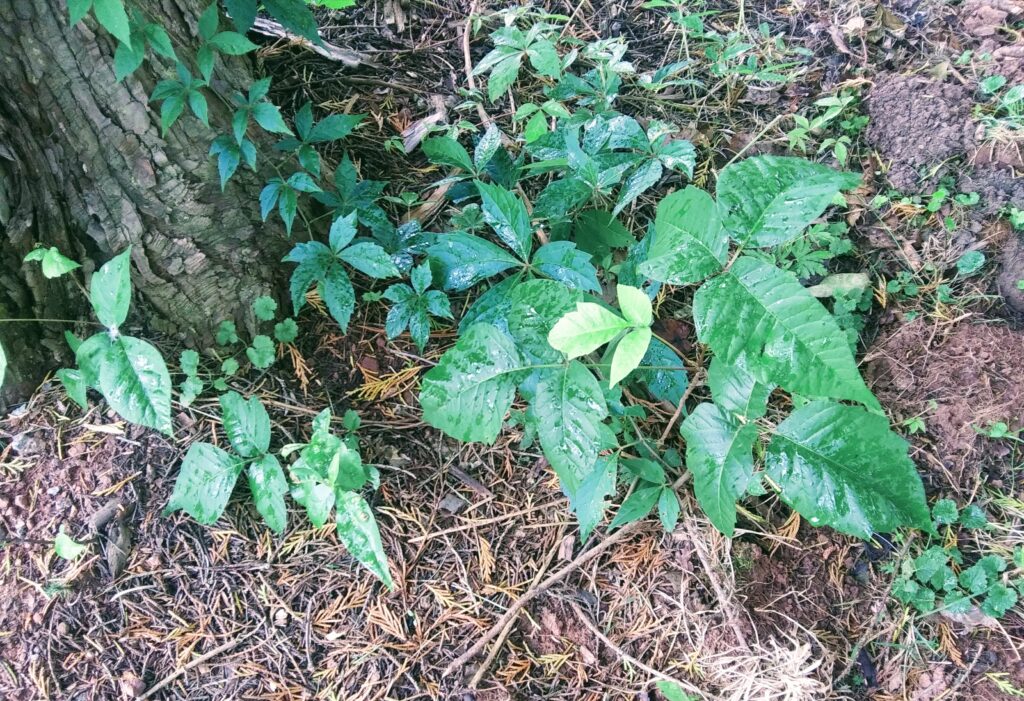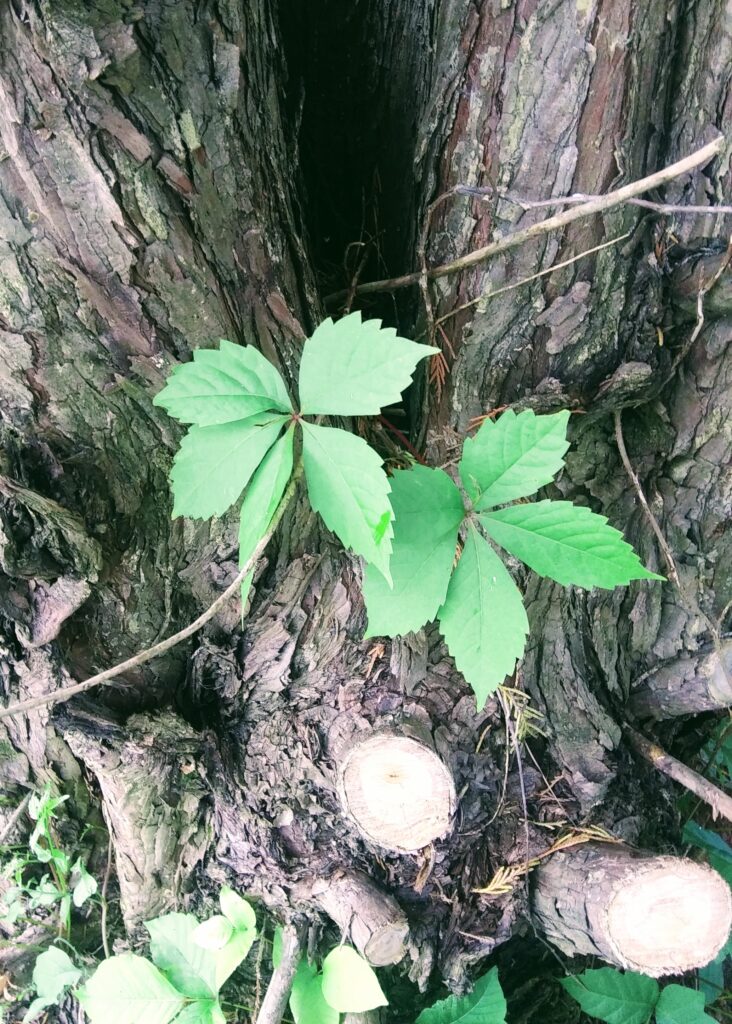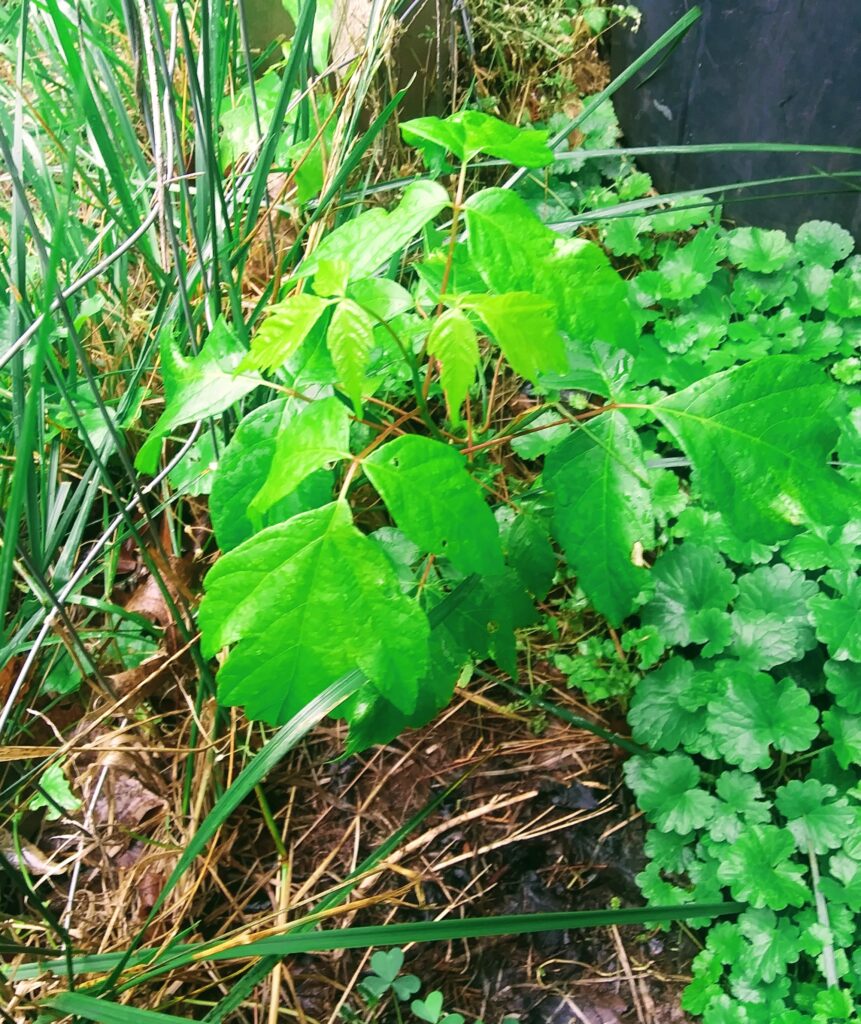Poison Ivy is not a fun topic to learn about the hard way. However, this is what happened last week when cleaning out some of weeds on my property.
Several poison ivy plants had sprung up underneath the trees and around our fence posts.

Without thinking much about it, some of the vines were pulled away from the trees. The gardener wore gloves. However, the vines came in contact with his bare arms. The gardener was also wearing short sleeves.
Resulting Rash
Unfortunately, with in a few hours, the gardener developed a red itchy rash and swelling over his forearms.
This rash, or contact dermatitis, became blisters, and then finally scabs.
Poison ivy plants contains urushiol which is a substance most people are allergic to.

Identifying Poison Ivy
The best course of action for next time is to identify the plants and then protect yourself against it.
Their vines climb or grow on low plants, trees, and poles. They have glossy three-leaves with smooth or tooth edged leaves. They also can have a long root system.
Removing the Toxic Plant from your Garden
There are a variety of ways to get ride of the plant. However, I actually dug up the plant’s roots to remove them and placed them in a large plastic bag.
When removing the plants, be sure to wear a long sleeve top, long pants, socks, and gloves. Avoid skin contact with the plant.
After removal, wash your clothing, gloves, shoes and garden tools.
If you accidently come in contact the plant, wash the area with soap and lots of cool water.
If your pet comes in contact with poison ivy, wash your pet wearing plastic gloves.
Always wash your hands after removing any toxic plants.
Virginia Creeper
I’m adding a note on the Virginia Creeper to this blog because the plant looks similar but is not a toxic plant.
The Virginia Creeper is also known as American Ivy plant. It grows in the eastern part of North America. It is a woody vine which is part of the grape family.
Notice the type of leaves on the below plant in the photograph.
Virginia Creeper can grow in the same environment as the poison plants.

The Virginia Creeper also likes to grow on tree trunks.
Ending Notes on Poison Ivy
If you are on a hike be sure to know what toxic plants look like and to avoid them.
But if it is growing in your yard, you need to take immediate action to rid your area from it.
That saying is so true, “Leaves of Three, Let it Be”.


